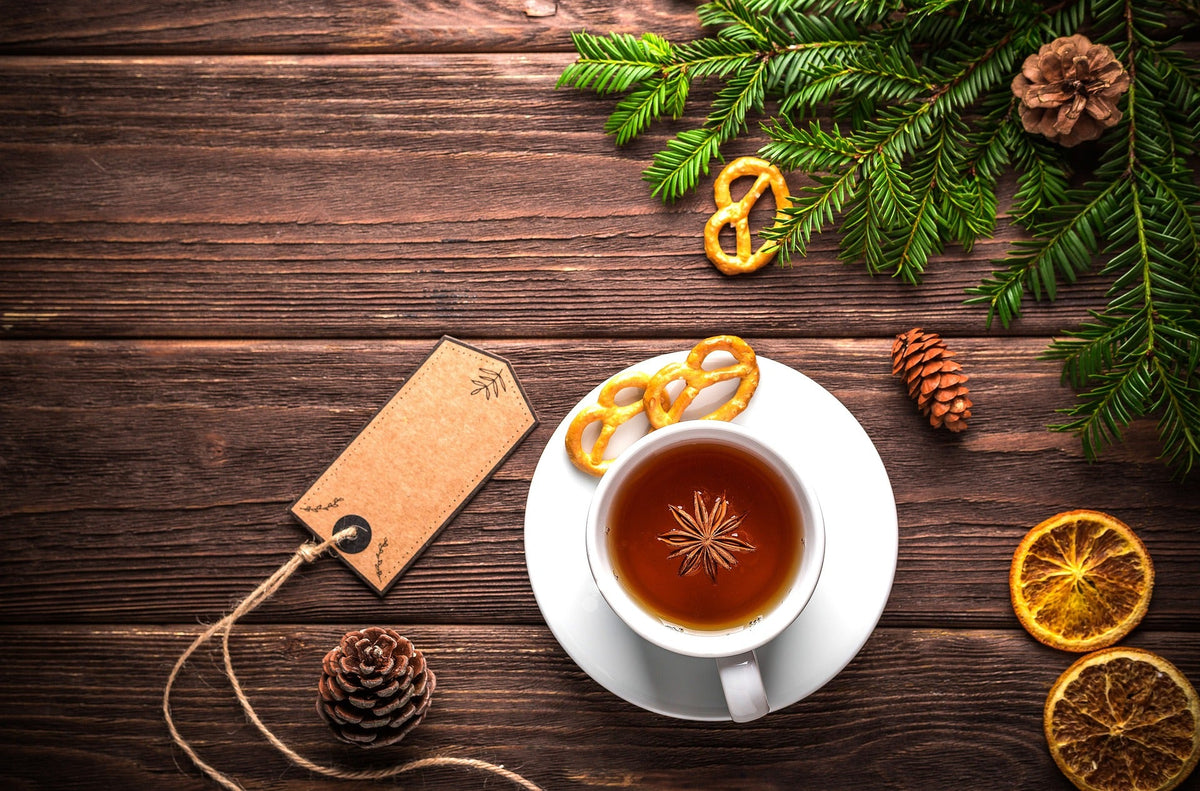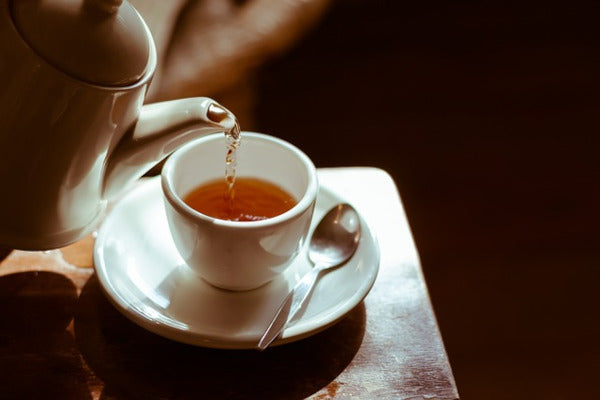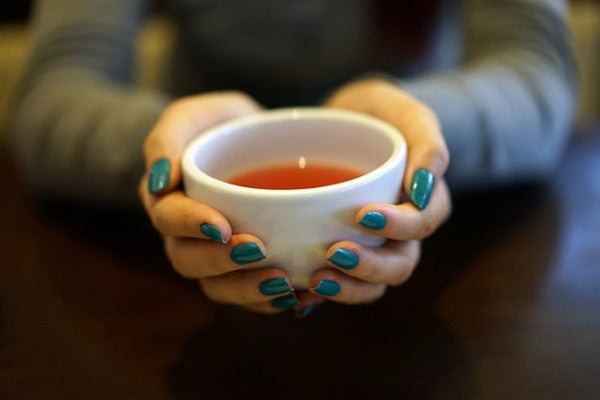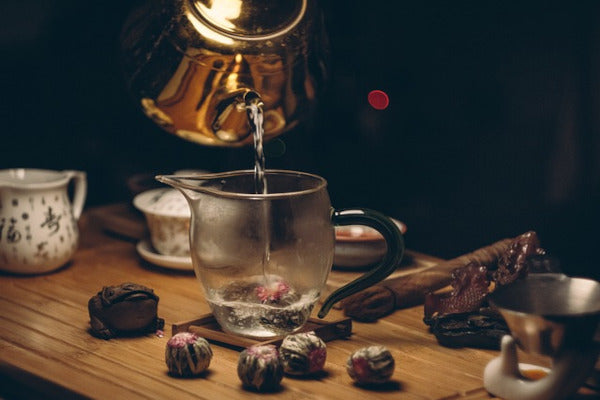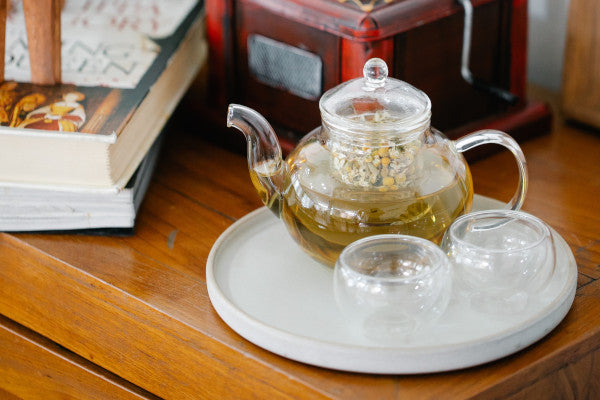Green teas are made from leaves and buds. They are generally much smoother and lighter than black teas , but more intense and full-bodied than white teas . Orthodox green teas offer a range of aromas and flavors, from stewed vegetables, nuts, and almonds, to citrus and other fruits. Green tea is now produced all over the world, but the finest continue to come from China and Japan.
Chinese green teas are milder, sweeter, more aromatic, and more delicate than Japanese green teas. They are characterized by their lightness and subtle notes of cooked vegetables and roasted nuts. Japanese green teas are more intense and astringent, with predominant notes of raw vegetables, seaweed, and lemon.
Manufacturing process
After the buds and leaves are harvested, they are immediately taken to the factory, where they are sometimes withered before fixing to prevent oxidation. Withering allows some of the water to evaporate and the flavor to concentrate in the leaf. This also concentrates the juices in the leaf cells, which will be used in the subsequent physical and chemical processes of the tea.
This is followed by fixation, which deactivates the polyphenol oxidase enzyme and thus stops oxidation. In China, fixation is traditionally done in frying pans, woks, wood-fired ovens, charcoal-fired ovens, or machines with hot metal pans.
In Japan, steam is almost always used. Each brewing method imparts a particular flavor to the tea produced, and it takes 30 seconds to 2 minutes, depending on the brewery and the type of green tea being brewed. Then, the final leaf shape is formed by rolling. This can be done by hand or by machine. Green tea can also be served with milk to soften its flavor.
Later, the leaf is dried in machines with metal pans, woks, or ovens until the water content in the leaf is reduced to approximately 2% to 3% by weight. Finally, it is sorted and packaged in suitable containers for transport and storage.
Types of green tea and preparation methods
- Lung Ching (China) Water temperature at 75-80 degrees and 2 minutes of rest.
- Sencha (China/Japan) Water temperature at 70-80 degrees and 1-2 minutes of rest.
- Maofeng or Mao Jien (China) Water temperature at 75-80 degrees and 2 minutes of rest.
- Gunpowder (China) Water temperature at 75-80 degrees and 2 minutes of rest.
- Gyokuro (Japan) Water temperature at 60-65 degrees and 1-2 minutes of rest.
- Matcha (Japan) Water temperature at 70-75 degrees and 20 to 30 seconds of stirring.
- Hari Talvar Boutique Single Estate (India) Water temperature at 70-75 degrees and 1-2 minutes of rest.
- These teas can also be mixed with other ingredients to make a more delicious green tea .
Main Properties
Much research suggests that organic green tea provides various health benefits, such as being an astringent, antioxidant (one hundred times more than vitamin C and twenty-five times more than vitamin E), cardiotonic, diuretic, stimulant, and antiviral.
It is also used to treat flatulence, to regulate body temperature and blood sugar levels, as a digestive aid, and to stimulate mental processes.
In traditional Chinese and Indian medicine, green tea has been used to treat asthma, angina, peripheral vascular disease, and coronary artery disease. Today, green tea is often prepared and consumed as a stimulant beverage or used in extracts.
The benefits of green tea and its extracts may protect against certain heart diseases, particularly coronary artery disease, and may lower LDL (bad cholesterol) and raise HDL (good cholesterol). The polyphenols and EGCG it contains have been used to prevent and treat various types of cancer, including breast cancer.
Green tea has also been used to protect the skin from damage caused by sunlight, thanks to its anti-inflammatory and anti-carcinogenic properties. It can be used internally as a beverage or externally as a spray.
It also protects the liver from the harmful effects of toxic substances such as alcohol and against liver tumors. It can relieve Crohn's disease and ulcerative colitis, and is very suitable for diabetics by helping regulate glucose levels in the body.
Green tea and weight loss
Various studies suggest that green tea facilitates weight loss by stimulating metabolism, thereby burning more fat. Ideally, you should drink three to four cups a day to see positive results. We should always be aware of the calories in green tea to know how to properly incorporate it into our diet.
Precautions
Although the FDA recognizes organic green tea as safe, pregnant or breastfeeding women should avoid it. Its caffeine content can cause sleep disturbances in infants and has been linked to iron metabolism disorders and microcytic anemia in young children.
People with heart problems, kidney problems, stomach ulcers, and psychological disorders (especially anxiety) should not drink it. If consumed in excess, its caffeine content can cause insomnia and interfere with other medications. Unsweetened green tea is also recommended for healthier consumption.
At Tetique, we are a tea supplier for businesses . We offer a wide variety of teas, from green and black teas to herbal and fruit teas, to meet the needs of your business and your customers. Additionally, our teas are made with high-quality ingredients and presented in biodegradable and compostable tea bags to be environmentally friendly. If you're looking for a reliable, high-quality tea supplier for your business, Tetique is your best option.


